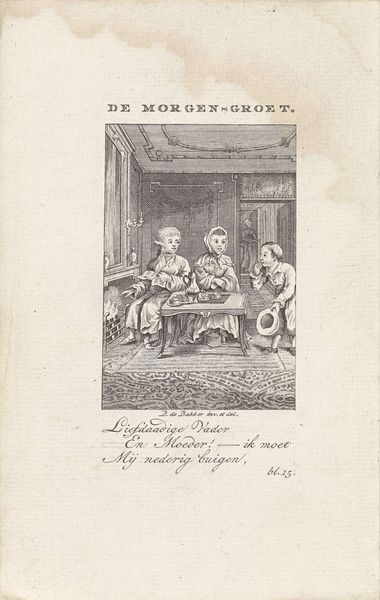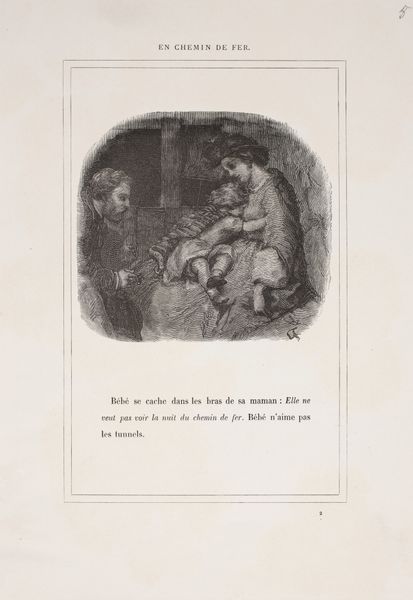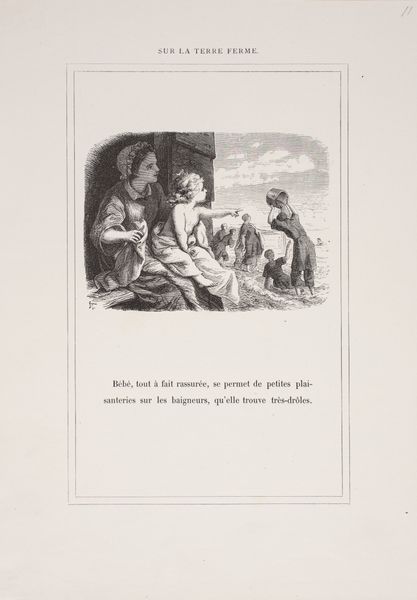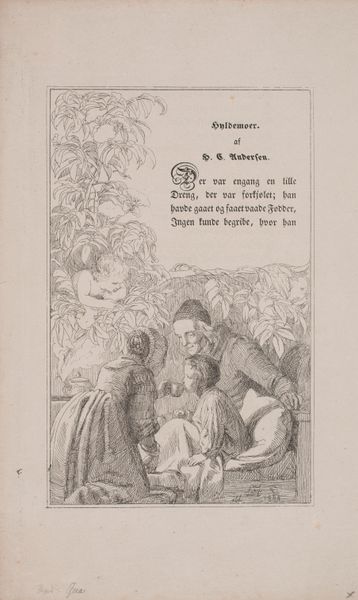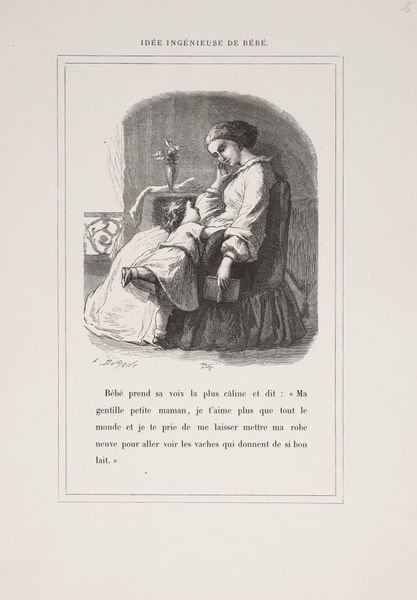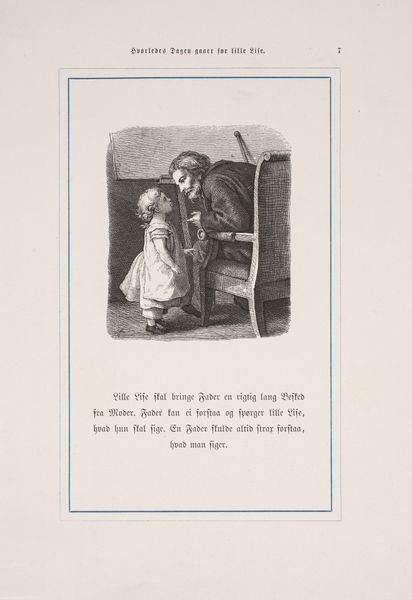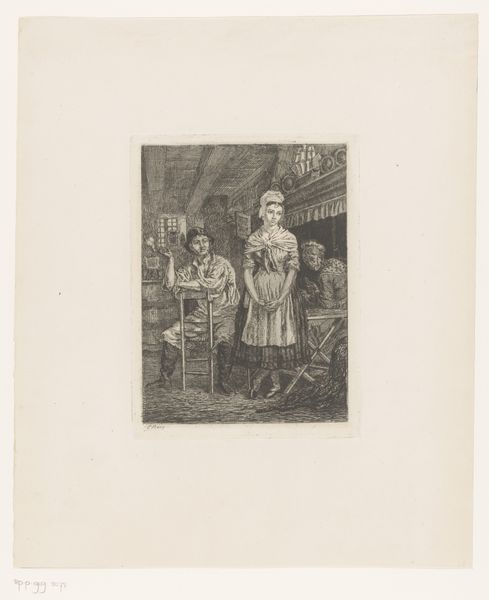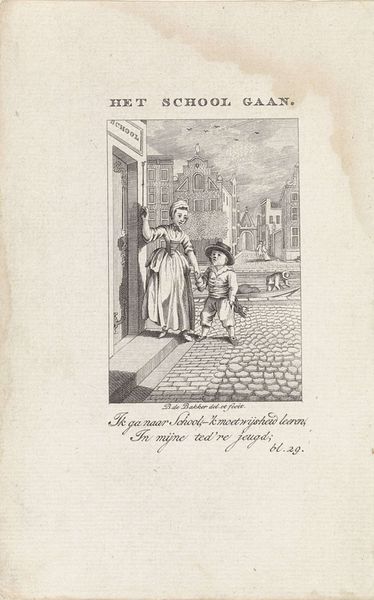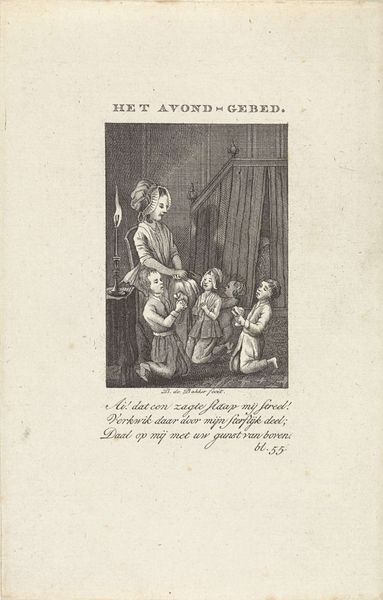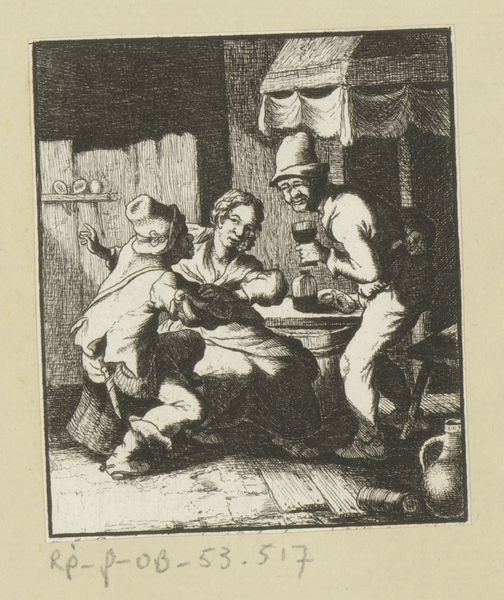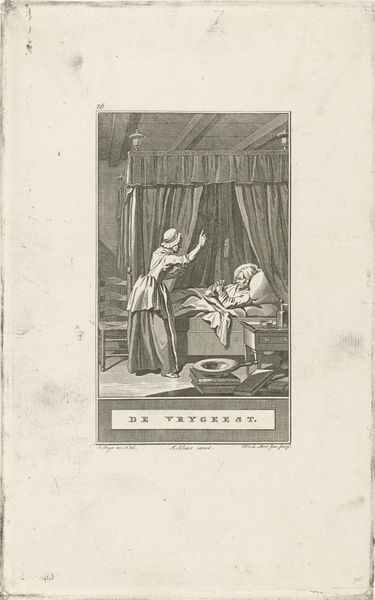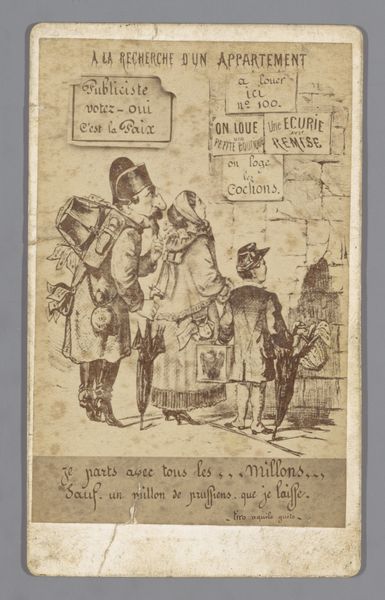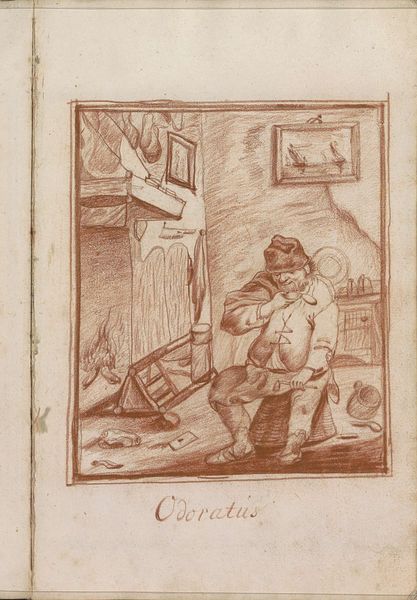
drawing, pencil, engraving
#
portrait
#
drawing
#
narrative-art
#
dutch-golden-age
#
landscape
#
child
#
pencil
#
genre-painting
#
engraving
Dimensions: height 165 mm, width 104 mm
Copyright: Rijks Museum: Open Domain
Curator: This engraving, rendered by Barent de Bakker in 1789, is titled "Kind kijkt hoe zijn ouders de middag maaltijd gebruiken," which translates to "Child Watching His Parents Enjoy Their Midday Meal." Its monochromatic palette, typical of the era, offers a detailed depiction of domestic life. Editor: The scene strikes me as surprisingly poignant. There’s an understated vulnerability in the child's pose as he observes his parents. The composition almost makes me think of an outsider peering in, observing the family's mealtime rituals. Curator: Yes, the artist positions the child as an observer, but from a formal standpoint, consider how de Bakker uses linear perspective to guide our eye. The window in the background creates depth, drawing us into the broader setting of ships and grazing livestock beyond the domestic space. The foreground detailing of the carpet pattern serves as an anchor for the familial scene. Editor: And what strikes me, considering that domestic scene, is its relationship to power dynamics. The parents are actively engaged, consuming a meal, while the child, positioned behind them, is passively watching. It speaks to a hierarchy inherent in family structures of that period, where children’s roles were defined by deference and observation. Curator: You raise an important point about social roles, but also note how the light seems to emphasize the textural qualities of the fabrics, the intricate detailing of the clothing, and even the glint on the glassware. The lines defining each element create a pleasing aesthetic experience. It’s a harmonious composition, reflecting neoclassical sensibilities. Editor: While I appreciate the aesthetics, I'm more compelled by the potential social commentary. The idyllic landscape visible through the window juxtaposes the reality of societal inequalities within the domestic sphere, right? The family dines, seemingly unaware or perhaps indifferent to, external economic disparities and societal realities of 1789, even the brewing tensions on the eve of revolution. Curator: It’s certainly valid to view the work through that lens, but perhaps focusing on de Bakker's artistic technique offers just as many insights. Notice the skillful use of cross-hatching to create tonal variation, enhancing the overall visual experience and aesthetic appeal, particularly striking given that this piece employs primarily pencil. Editor: On a final note, thinking of families, what narrative might be woven if that child, rather than passively watching, was actively included in the midday meal, symbolically rewriting that history, that dynamic of that era and time? Curator: A powerful reimagining, to be sure! Ultimately, our individual interpretations—both formal and contextual— enrich our appreciation of de Bakker's work, highlighting its lasting relevance across the centuries.
Comments
No comments
Be the first to comment and join the conversation on the ultimate creative platform.
